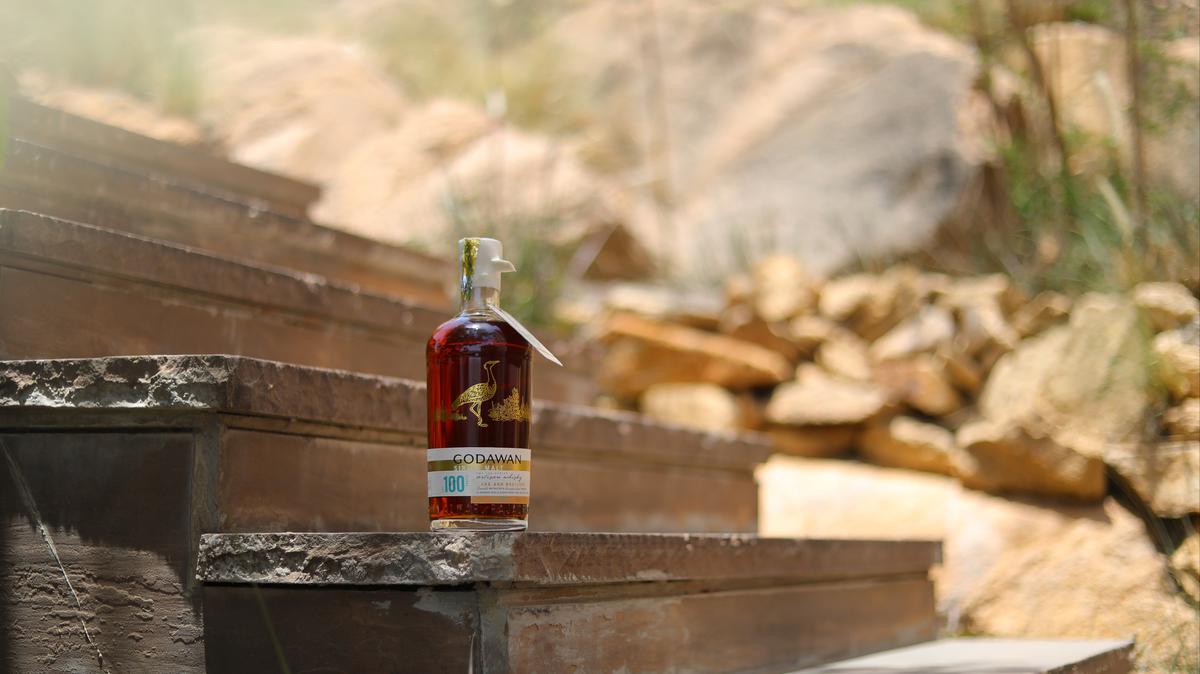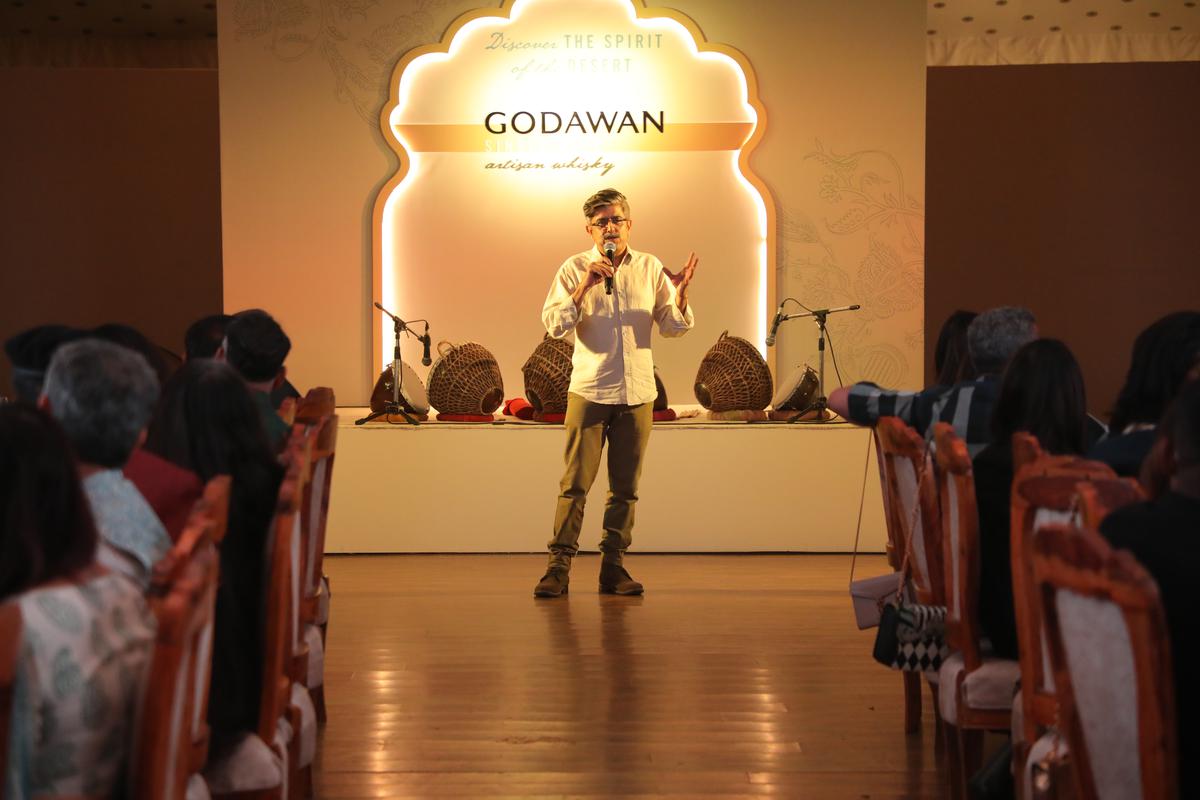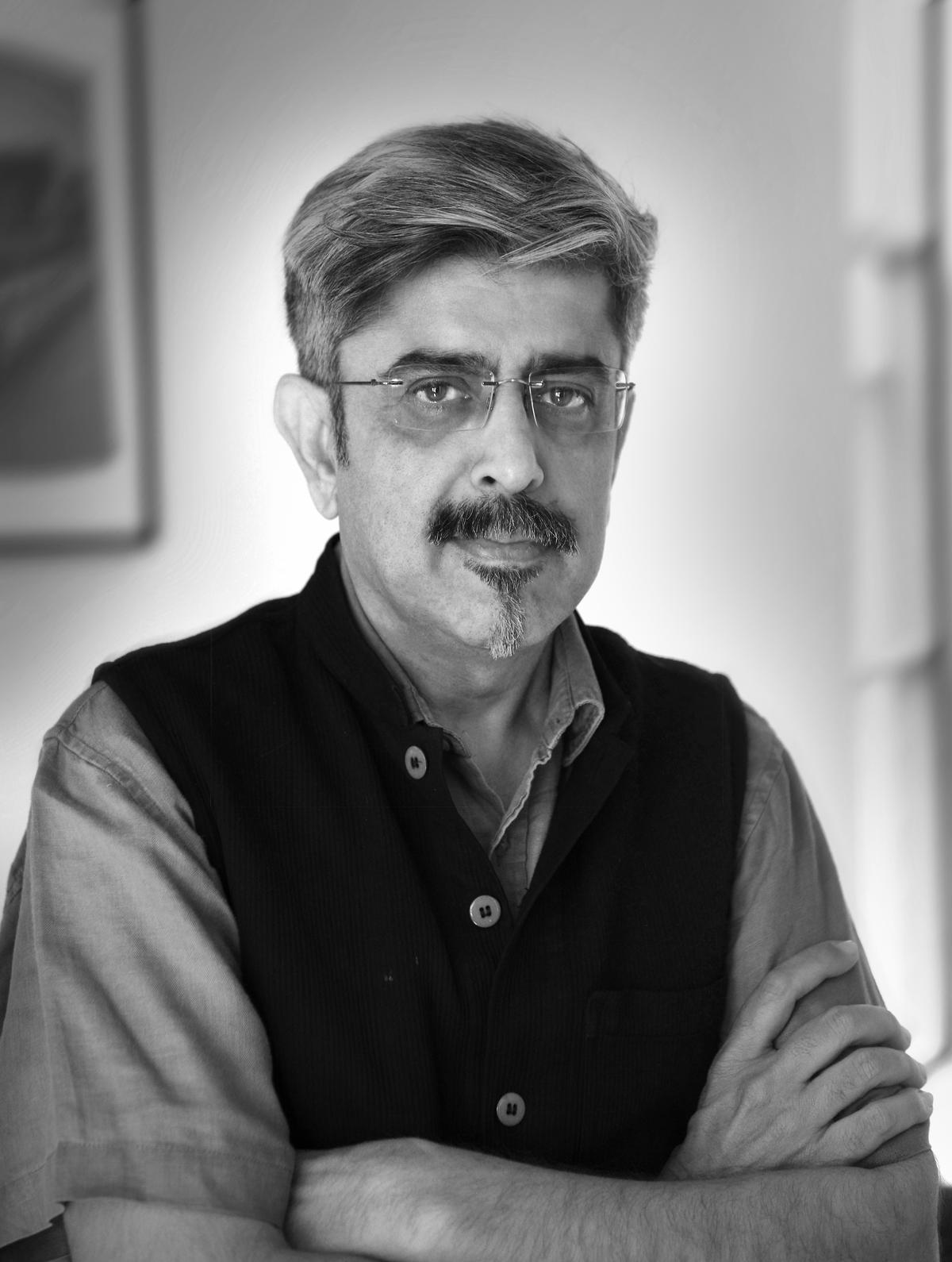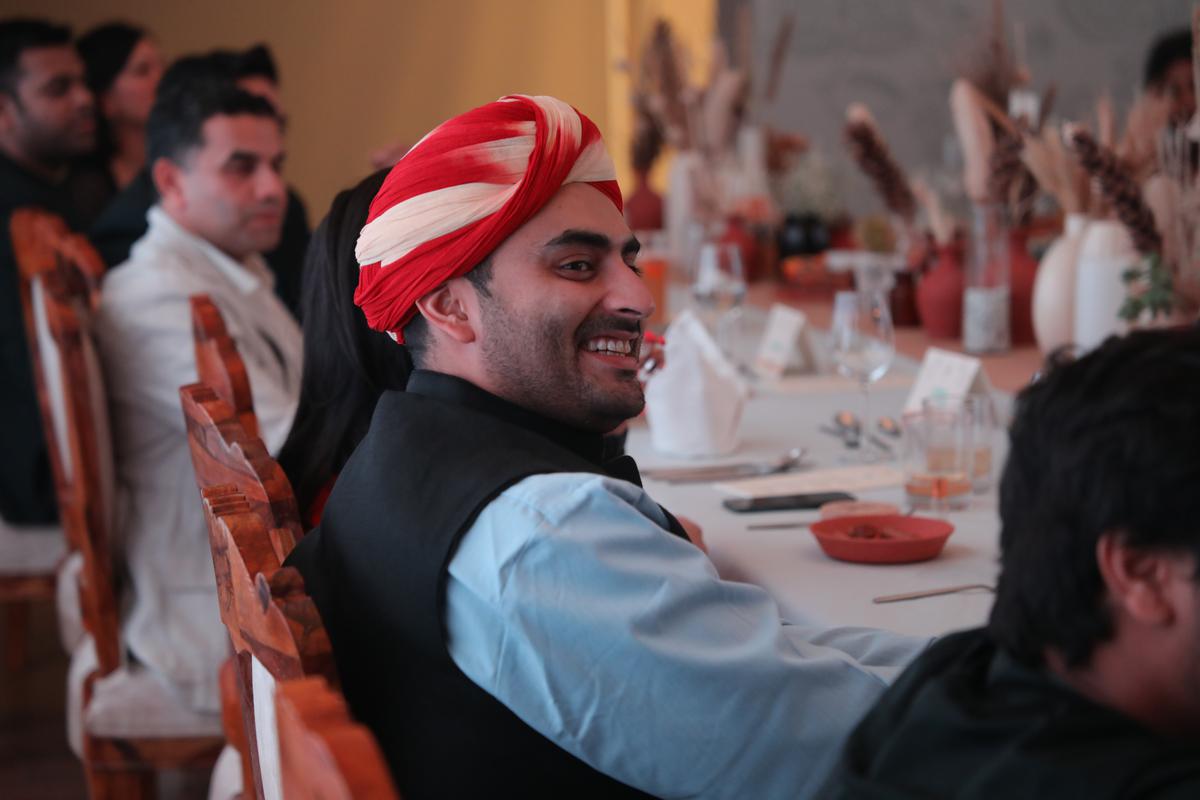The Great Indian Bustard
| Photo Credit: Special arrangement
At Jaisalmer, the skyline is pinned in place by the sand dunes of Sam on one side and the ethereal silhouette of the Sonar Qila on the other. Between the two, they define the spirit of this desert outpost, forged by the sword in a thousand bloody battles in the heat of the Thar.
Here, in the land of the Bhati Rajputs, where scrubland meets tawny-coloured hills lies one of the last habitats in India of the Great Indian Bustard, among the heaviest of the flying birds. Once also found in the grasslands of central India the godawan, as it is locally called, is critically endangered due to hunting over the decades — numbers are now in the hundreds. Local communities like the Bishnoi, for whom environmental protection is a key principle, have pitched in to save the bird.

Godawan by Diageo
| Photo Credit:
Shivam Mutha
So has luxury brand Diageo India with the launch of Godawan 100, a limited edition variant of its artisanal single malt, at the Alila Fort, Bishangarh. Amidst discussion on the brand’s commitment to conserve and replenish the numbers of the bird by working with local communities and redefining luxury for the conscious consumer, the event also roped in panoramic photographer Amit Pasricha and the titular maharawal of Jaisalmer, Chaitanya Raj Singh to share inputs from their work in conservation.
Amit Pasricha
Amit is a third-generation photographer – his family has links to the iconic Delhi Photo Company, official portrait photographers to the Presidents of India until recently. Speaking on phone from New Delhi, he says, “I am an explorer of people and places. But, I did not have to travel far to find inspiration. My father, Avinash, was celebrated for his dance and music photography and was the photo editor of the magazine SPAN. With all this influence, I had to guard my creative well-spring. Photography is a language, I had to find my own way to further it as a language of communication.”

Amit Pasricha at the event
| Photo Credit:
Special arrangement
Beginning with a Nikon camera, Amit started serious photography when he was in Class XII, shooting 10 of Delhi’s ugliest buildings for City Scan magazine. It led to a life-long love for capturing the still lives of Indian monuments. “I’m not an equipment man and I shoot with anything at hand — camera or iPhone. But I choose to shoot raw without the colour tonality that phones use,” says Amit, whose work has found its way into books such as Sacred India and India at Home; and books on Umaid Bhawan, Rashtrapati Bhavan and Mughal monuments.

Amit Pasricha
| Photo Credit:
Special arrangement
“When you see monuments as not just centres of history but as cultural icons, you help in saving them. These places have recorded lives of the multiverse that is India. When you save a monument, you save the landscape in which it stands. You save the fauna and flora around it,” adds Amit, who shot his first picture of the godawan nearly 30 years ago.
“It is important to recognise that there is a luxury component to saving these things,” he says, elaborating on his volunteer-driven heritage map of India project, India Lost & Found. “Five hundred people across age and interest, photograph, illustrate, map, write, and edit about monuments that are long lost. We have the facts rechecked at various levels and there is no architectural yardstick to choosing them. Just getting the word out, to save them, like getting the word out to save the godawan.”
Chaitanya Raj Singh
Chaitanya says that hailing from a family that has ruled this desert realm for eight centuries and studying the politics of Asia and Africa at SOAS (School of Oriental and African Studies), London, helped him understand the trajectories of life in these places. “Jaisalmer Fort is a living monument and we have to work with many stakeholders to help tourism and conservation flourish. That foundation was laid by my late father whose efforts won him recognition from the UN in 2013. My epiphany came when I got Bada Bagh and the Jai Singh dam cleaned up,” he explains.

Chaitanya Raj Singh
| Photo Credit:
Special Arrangement
He adds that challenges lie in the fact that although people here are street-smart they are still not equipped to deal with the tourist influx. “The younger generation does not care about aesthetics. The greening of the desert by successive governments has led to unseasonal rains and disturbed migratory patterns,” Chaitanya says, adding that the line between providing food security and preserving a desert ecology has already been crossed. “It has resulted in shrinking acreage for birds like the godawan. You hardly see grasslands now. Hopefully, initiatives like Godawan 100 and biomimicry initiatives will help knock on the right doors. Something for godawan on the scale of Project Tiger has to be done, if we want to save it.”